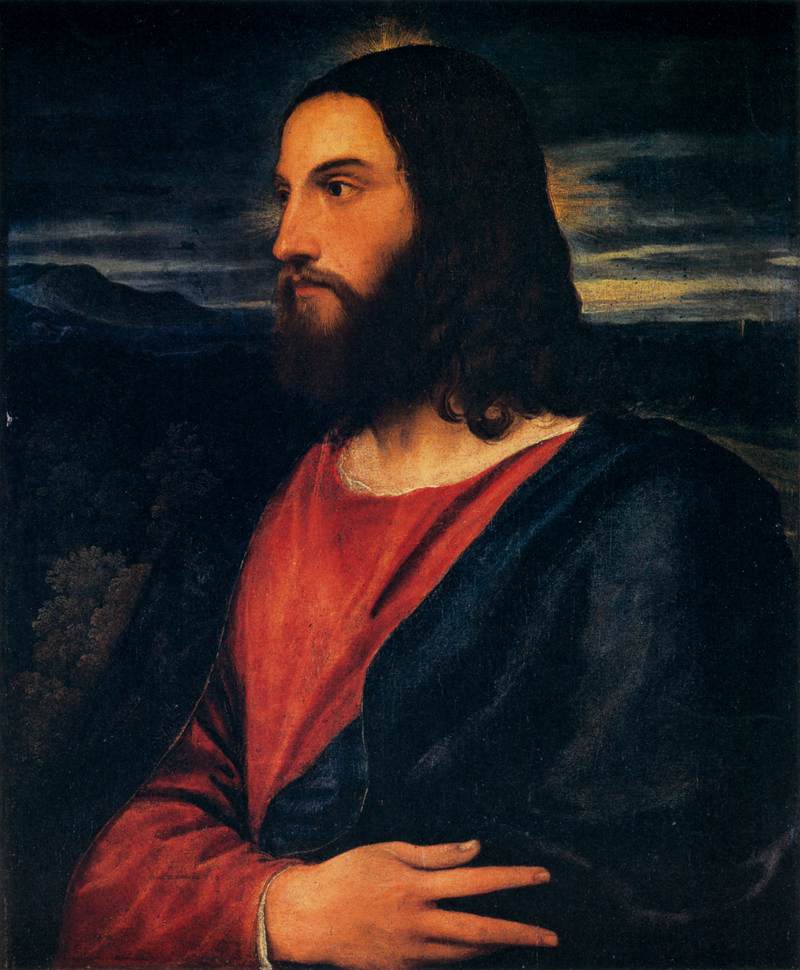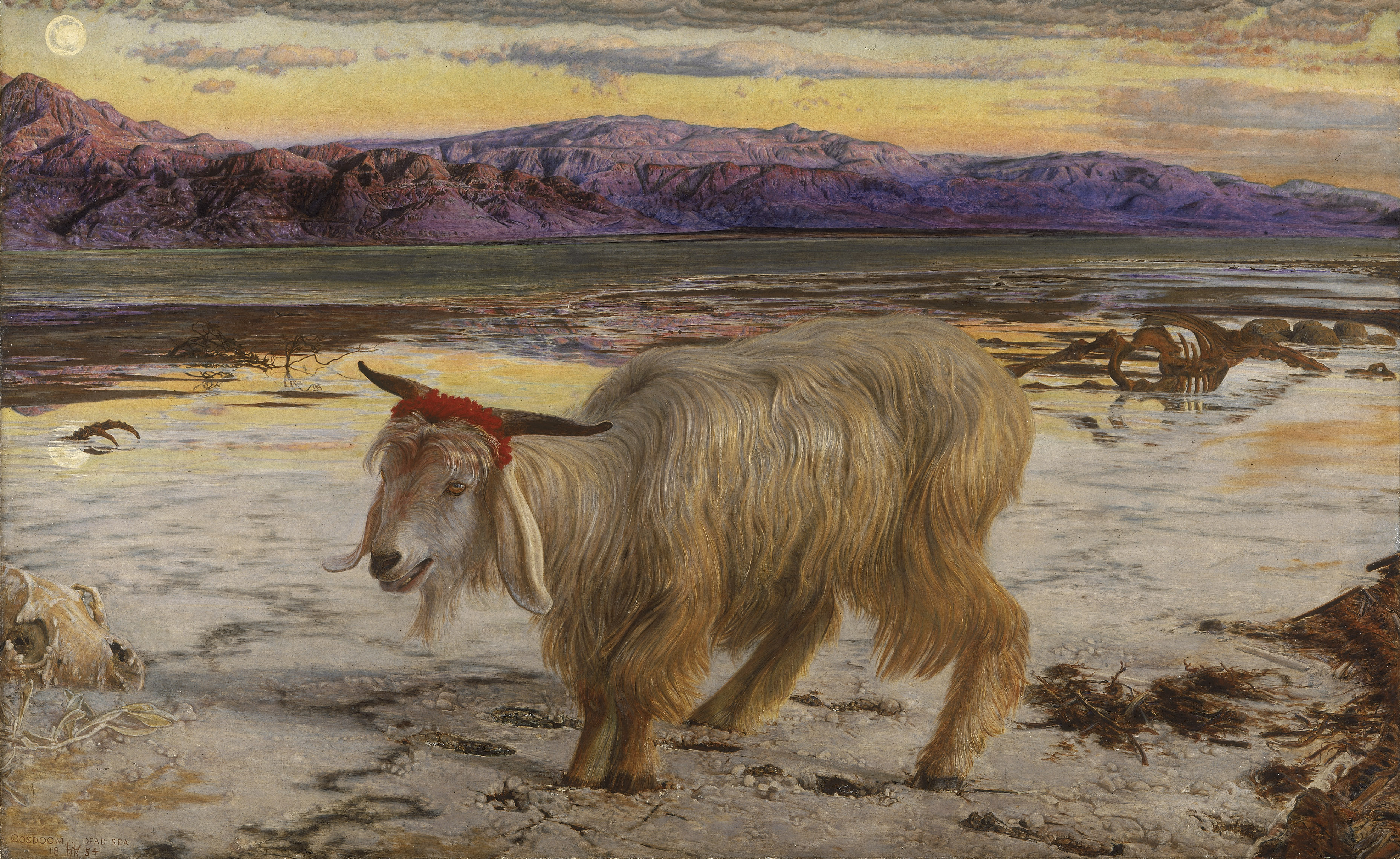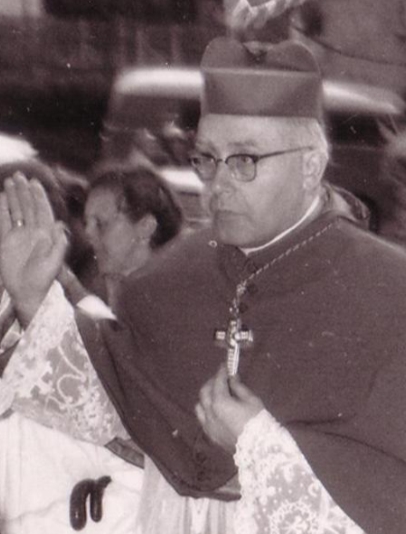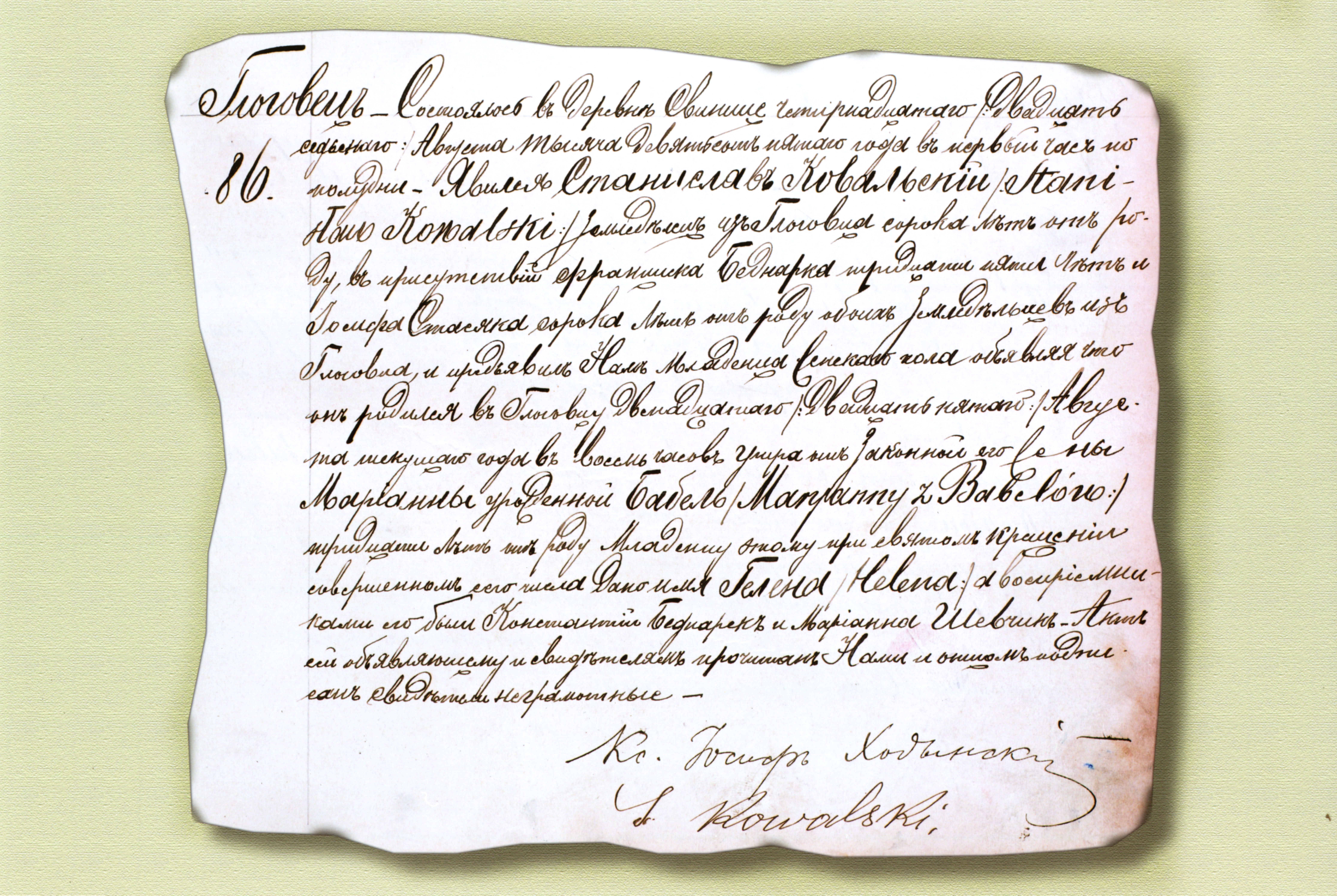|
Victim Soul
The concept of a victim soul is an unofficial belief which derives from an interpretation of the Roman Catholic Church's teaching on redemptive suffering. Such a person believes themselves to be one chosen by God to suffer more than most people during life, accepting this suffering, based on the example of Christ's own Passion. Neither the Catholic Church, nor any other Christian denomination, officially designates anyone as a victim soul. The Roman Catholic Church does not teach a doctrine of Victim Souls, considering such beliefs to be a matter of private revelation and therefore, Church members are not obliged to accept or believe such claims. Background Paul the Apostle may have considered himself an example, as he says in Colossians 1:24: "Now I rejoice in my sufferings for your sake, and in my flesh I complete what is lacking in Christ’s afflictions for the sake of his body, that is, the Church," (RSV; SCE) In the apostolic letter ''Salvifici doloris'' (1984), which deal ... [...More Info...] [...Related Items...] OR: [Wikipedia] [Google] [Baidu] |
Redemptive Suffering
Redemptive suffering is the Christian belief that human suffering, when accepted and offered up in union with the Passion of Jesus, can remit the just punishment for one's sins or for the sins of another, or for the other physical or spiritual needs of oneself or another. In Christianity, it is a tenet of Catholic theology, although it is taught in Reformed doctrine as well. Pope John Paul II stated, "Each man, in his sufferings, can also become a sharer in the redemptive suffering of Christ". (cf. Colossians 1:24) Like an indulgence, redemptive suffering does not gain the individual ''forgiveness'' for their sin; forgiveness results from God's grace, freely given through Christ, which cannot be earned. (see Romans 4:3-5) Forms Religious practitioners in various traditions have found spiritual benefits from voluntarily bringing upon themselves additional pain and discomfort through corporal mortification. One extreme example of redemptive suffering, which existed in the 13th an ... [...More Info...] [...Related Items...] OR: [Wikipedia] [Google] [Baidu] |
Mary Of The Divine Heart
Mary of the Divine Heart (Münster, 8 September 1863 – Porto, 8 June 1899), born Maria Droste zu Vischering, was a German Uradel, noblewoman and Catholic Church, Roman Catholic religious sister of the Congregation of Our Lady of Charity of the Good Shepherd. She is best known for having influenced Pope Leo XIII to consecrate the world to the Sacred Heart of Jesus. Pope Leo XIII called the solemn consecration "the greatest act of my pontificate". Biography Birth Maria Anna Johanna Franziska Theresia Antonia Huberta Droste zu Vischering was born with her twin brother Max (Maximilian Droste zu Vischering) on 8 September 1863, the feast of the Nativity of Mary, Nativity of the Blessed Virgin Mary, in the Erbdrostenhof, Erbdrostenhof Palace, in Münster, the capital city of Westphalia, Germany. She was a daughter of one of the wealthiest and noblest German families, which distinguished itself by its fidelity to the Catholic Church during the persecution of the ''Kulturkampf''. H ... [...More Info...] [...Related Items...] OR: [Wikipedia] [Google] [Baidu] |
Our Lady Of Seven Dolours
Our Lady of Sorrows ( la, Beata Maria Virgo Perdolens), Our Lady of Dolours, the Sorrowful Mother or Mother of Sorrows ( la, Mater Dolorosa, link=no), and Our Lady of Piety, Our Lady of the Seven Sorrows or Our Lady of the Seven Dolours are names by which Mary, mother of Jesus, is referred to in relation to sorrows in life. As ', it is also a key subject for Marian art in the Catholic Church. The Seven Sorrows of Mary are a popular religious theme and a Catholic devotion. In Christian imagery, the Virgin Mary is portrayed sorrowful and in tears, with one or seven swords piercing her heart, iconography based on the prophecy of Simeon in Luke 2:34–35. Pious practices in reference to this title include the Chaplet of the Seven Sorrows, the Seven Principal Dolors of the Blessed Virgin, the Novena in Honor of the Seven Sorrows of Mary, and the ''Via Matris''. The feast of Our Lady of Sorrows is liturgically celebrated every 15 September, while a feast, the Friday of Sorrows is obs ... [...More Info...] [...Related Items...] OR: [Wikipedia] [Google] [Baidu] |
Man Of Sorrows
Man of Sorrows, a biblical term, is paramount among the prefigurations of the Messiah identified by the Bible in the passages of Isaiah 53 (''Servant songs'') in the Hebrew Bible. It is also an iconic devotional image that shows Christ, usually naked above the waist, with the wounds of his Passion prominently displayed on his hands and side (the "ostentatio vulnerum", a feature of other standard types of image), often crowned with the Crown of Thorns and sometimes attended by angels. It developed in Europe from the 13th century and was especially popular in Northern Europe. The image continued to spread and develop iconographical complexity until well after the Renaissance, but the Man of Sorrows in its many artistic forms is the most precise visual expression of the piety of the later Middle Ages, which took its character from mystical contemplation rather than from theological speculation. Together with the ''Pietà'', it was the most popular of the Andachtsbilder-type images ... [...More Info...] [...Related Items...] OR: [Wikipedia] [Google] [Baidu] |
Stations Of The Cross
The Stations of the Cross or the Way of the Cross, also known as the Way of Sorrows or the Via Crucis, refers to a series of images depicting Jesus Christ on the day of Crucifixion of Jesus, his crucifixion and accompanying prayers. The stations grew out of imitations of the Via Dolorosa in Jerusalem, which is a traditional processional route symbolising the actual path Jesus walked to Mount Calvary. The objective of the stations is to help the Christian faithful to make a spiritual Christian pilgrimage, pilgrimage through contemplation of the Passion (Christianity), Passion of Christ. It has become one of the most popular devotions and the stations can be found in many Western Christianity, Western Christian churches, including those in the Catholic Church, Roman Catholic, Lutheran, Anglican, and Methodist traditions. Commonly, a series of 14 images will be arranged in numbered order along a path, along which worshippers—individually or in a procession—move in order, stoppi ... [...More Info...] [...Related Items...] OR: [Wikipedia] [Google] [Baidu] |
Redeemer (Christianity)
In Christian theology, Jesus in Christianity, Jesus is sometimes referred to by the title Redeemer. This refers to the Christian soteriology, salvation he accomplished, and is based on the metaphor of Redemption (theology)#In Christianity, redemption, or "buying back". In the New Testament, ''redemption'' is used to refer both to deliverance from sin and to freedom from captivity. Although the gospels do not use the title "Redeemer", redemption is used in several of Pauline epistles, Paul's letters. Leon Morris says that "Paul uses the concept of redemption primarily to speak of the saving significance of the death of Christ." Universality The New Testament speaks of Christ as the one Saviour for all people.On Christ's role as universal Saviour, cf. Gerald O'Collins, ''Salvation for All: God's Other Peoples'', OUP (2008). The First Epistle of John says that Jesus is "the propitiation for our sins and not for ours only but also for the sins of the world" (wikisource:Bible (Ameri ... [...More Info...] [...Related Items...] OR: [Wikipedia] [Google] [Baidu] |
Scapegoat
In the Bible, a scapegoat is one of a pair of kid goats that is released into the wilderness, taking with it all sins and impurities, while the other is sacrificed. The concept first appears in the Book of Leviticus, in which a goat is designated to be cast into the desert to carry away the sins of the community. Practices with some similarities to the scapegoat ritual also appear in Ancient Greece and Ebla. Origins Some scholars have argued that the scapegoat ritual can be traced back to Ebla around 2400 BC, from where it spread throughout the ancient Near East. Etymology The word "scapegoat" is an English translation of the Hebrew ( he, עזאזל), which occurs in Leviticus 16:8: The Brown–Driver–Briggs Hebrew Lexicon gives () as a reduplicative intensive of the stem , "remove", hence , "for entire removal". This reading is supported by the Greek Old Testament translation as "the sender away (of sins)". The lexicographer Gesenius takes to mean "averter", wh ... [...More Info...] [...Related Items...] OR: [Wikipedia] [Google] [Baidu] |
Blessed Virgin Mary
Mary; arc, ܡܪܝܡ, translit=Mariam; ar, مريم, translit=Maryam; grc, Μαρία, translit=María; la, Maria; cop, Ⲙⲁⲣⲓⲁ, translit=Maria was a first-century Jewish woman of Nazareth, the wife of Joseph and the mother of Jesus. She is a central figure of Christianity, venerated under various titles such as virgin or queen, many of them mentioned in the Litany of Loreto. The Eastern and Oriental Orthodox, Church of the East, Catholic, Anglican, and Lutheran churches believe that Mary, as mother of Jesus, is the Mother of God. Other Protestant views on Mary vary, with some holding her to have considerably lesser status. The New Testament of the Bible provides the earliest documented references to Mary by name, mainly in the canonical Gospels. She is described as a young virgin who was chosen by God to conceive Jesus through the Holy Spirit. After giving birth to Jesus in Bethlehem, she raised him in the city of Nazareth in Galilee, and was in Jeru ... [...More Info...] [...Related Items...] OR: [Wikipedia] [Google] [Baidu] |
Exorcism In Christianity
In Christianity, exorcism involves the practice of casting out one or more demons from a person whom they are believed to have possessed. The person performing the exorcism, known as an exorcist, is often a member of the Christian Church, or an individual thought to be graced with special powers or skills. The exorcist may use prayers and religious material, such as set formulas, gestures, symbols, icons, or amulets. The exorcist often invokes God, Jesus, angels and archangels, and various saints to aid with the exorcism. Christian exorcists most commonly cast out demons in Jesus' name. The term ''exorcism'' became prominent in Early Christianity from the early 2nd century onward. In general, people considered to be possessed are not regarded as evil in themselves, nor wholly responsible for their actions, because possession is considered to be manipulation of an unwilling victim by a demon resulting in harm to self or others. Accordingly, practitioners regard exorcism as mor ... [...More Info...] [...Related Items...] OR: [Wikipedia] [Google] [Baidu] |
Demonic Possession
Spirit possession is an unusual or altered state of consciousness and associated behaviors purportedly caused by the control of a human body by spirits, ghosts, demons, or gods. The concept of spirit possession exists in many cultures and religions, including Buddhism, Christianity,Mark 5:9, Luke 8:30 Haitian Vodou, Hinduism, Islam, Wicca, and Southeast Asian, African, and Native American traditions. Depending on the cultural context in which it is found, possession may be considered voluntary or involuntary and may be considered to have beneficial or detrimental effects on the host. In a 1969 study funded by the National Institute of Mental Health, spirit possession beliefs were found to exist in 74% of a sample of 488 societies in all parts of the world, with the highest numbers of believing societies in Pacific cultures and the lowest incidence among Native Americans of both North and South America. As Pentecostal and Charismatic Christian churches move into both African ... [...More Info...] [...Related Items...] OR: [Wikipedia] [Google] [Baidu] |
Anneliese Michel
Anna Elisabeth "Anneliese" Michel (21 September 1952 – 1 July 1976) was a German woman who underwent 67 Catholic exorcism rites during the year before her death. She died of malnutrition, for which her parents and priest were convicted of negligent homicide. She was diagnosed with epileptic psychosis (temporal lobe epilepsy) and had a history of psychiatric treatment that proved ineffective. When Michel was 16, she experienced a seizure and was diagnosed with psychosis caused by temporal lobe epilepsy. Shortly thereafter, she was diagnosed with depression and was treated by a psychiatric hospital. By the time she was 20, she had become intolerant of various religious objects and began to hear voices. Her condition worsened despite medication, and she became suicidal, also displaying other symptoms, for which she took medication as well. After the taking of psychiatric medications for five years failed to improve her symptoms, Michel and her family became convinced she was p ... [...More Info...] [...Related Items...] OR: [Wikipedia] [Google] [Baidu] |
Faustina Kowalska
Maria Faustyna Kowalska, OLM (born Helena Kowalska; 25 August 1905 – 5 October 1938), also known as ''Maria Faustyna Kowalska of the Blessed Sacrament'', Faustyna popularly spelled "Faustina", was a Polish Catholic religious sister and mystic. Her apparitions of Jesus Christ inspired the Roman Catholic devotion to the Divine Mercy and earned her the title of "Secretary of Divine Mercy". Throughout her life, Kowalska reported having visions of Jesus and conversations with him, which she noted in her diary, later published as '' The Diary of Saint Maria Faustina Kowalska: Divine Mercy in My Soul''. Her biography, submitted to the Congregation for the Causes of Saints, quoted some of the conversations with Jesus regarding the Divine Mercy devotion. At the age of 20 years, she joined a convent in Warsaw. She was later transferred to Płock and then to Vilnius, where she met Father Michał Sopoćko, who was to be her confessor and spiritual director, and who supported her ... [...More Info...] [...Related Items...] OR: [Wikipedia] [Google] [Baidu] |
.jpg)







